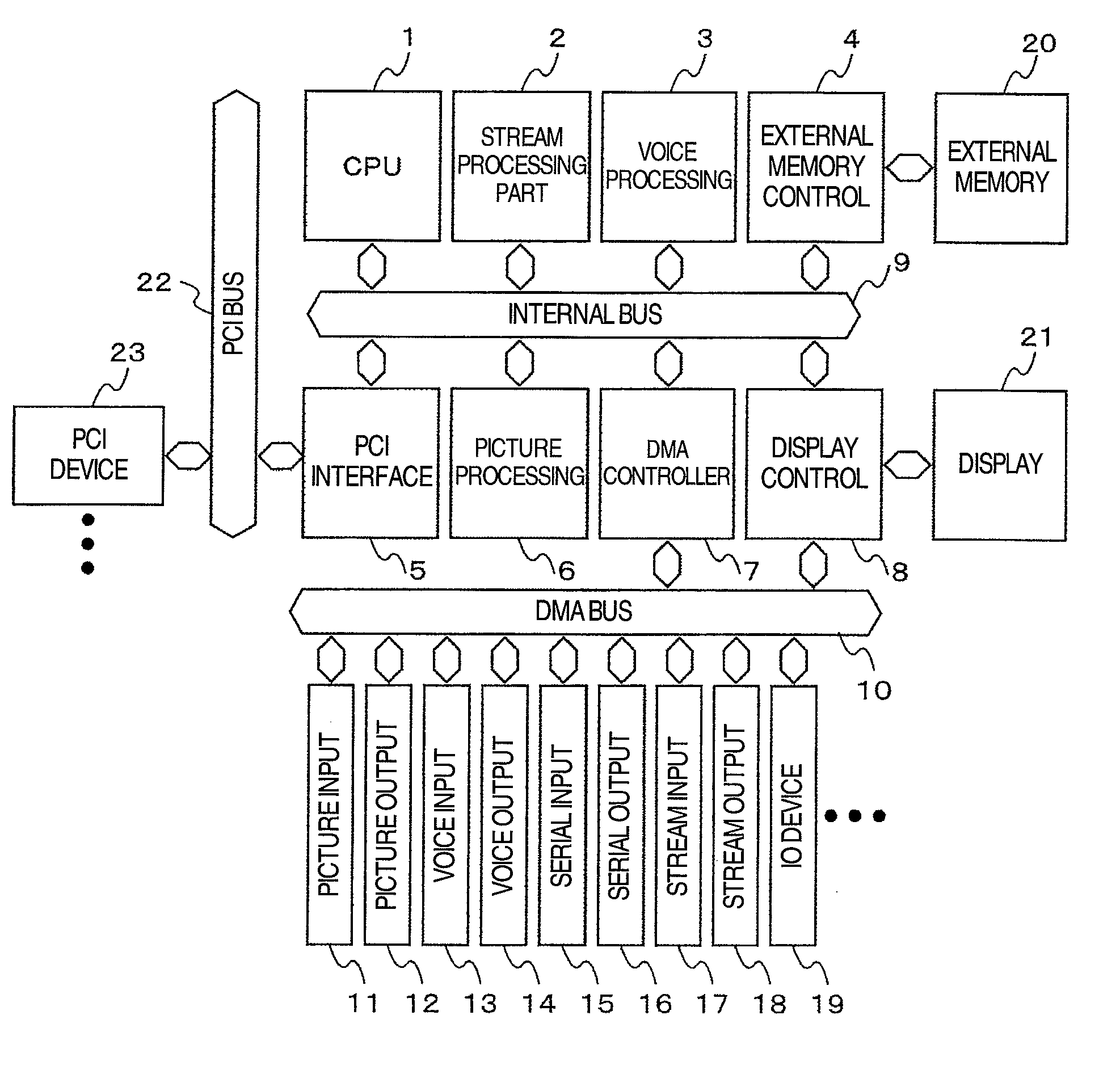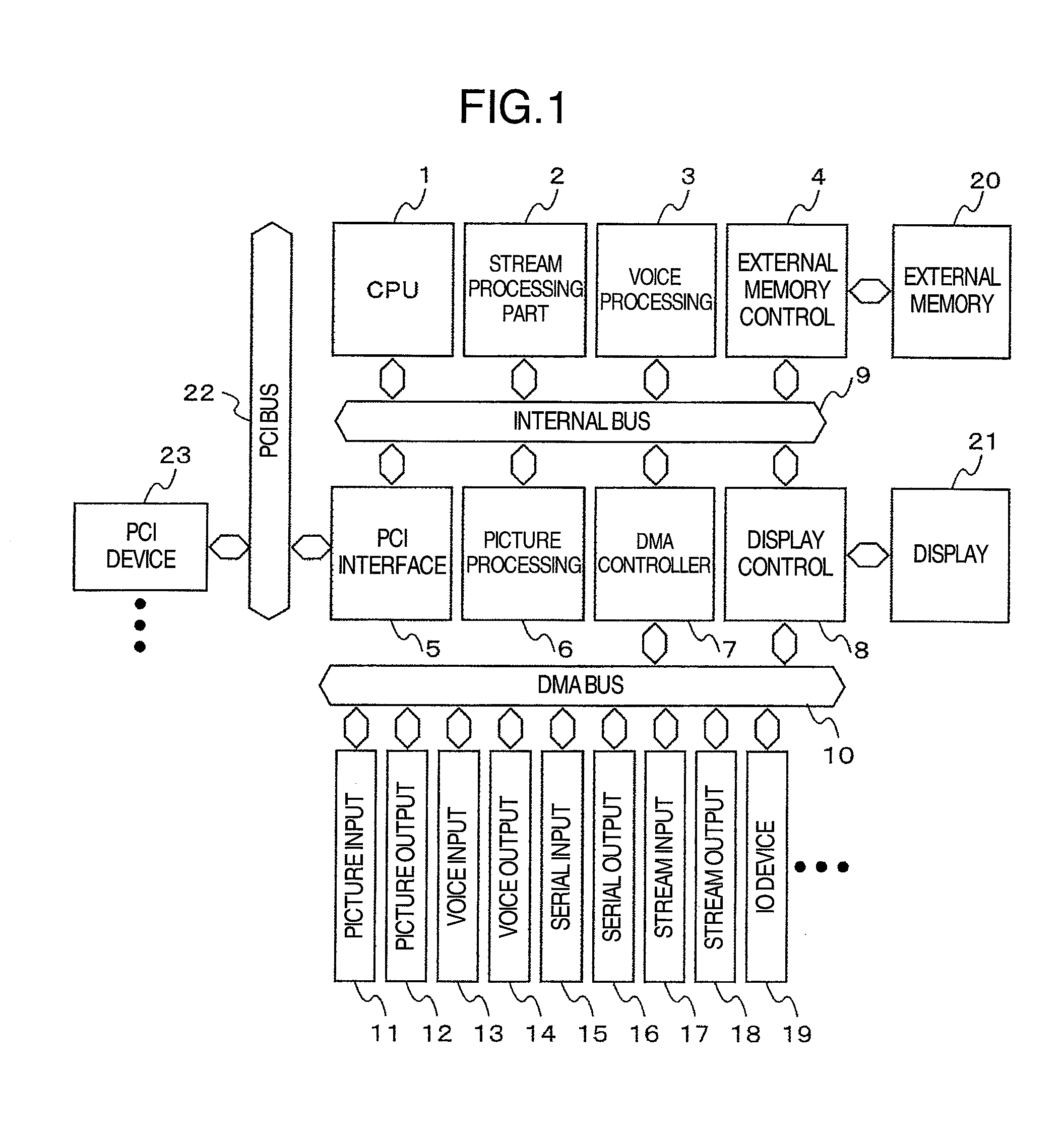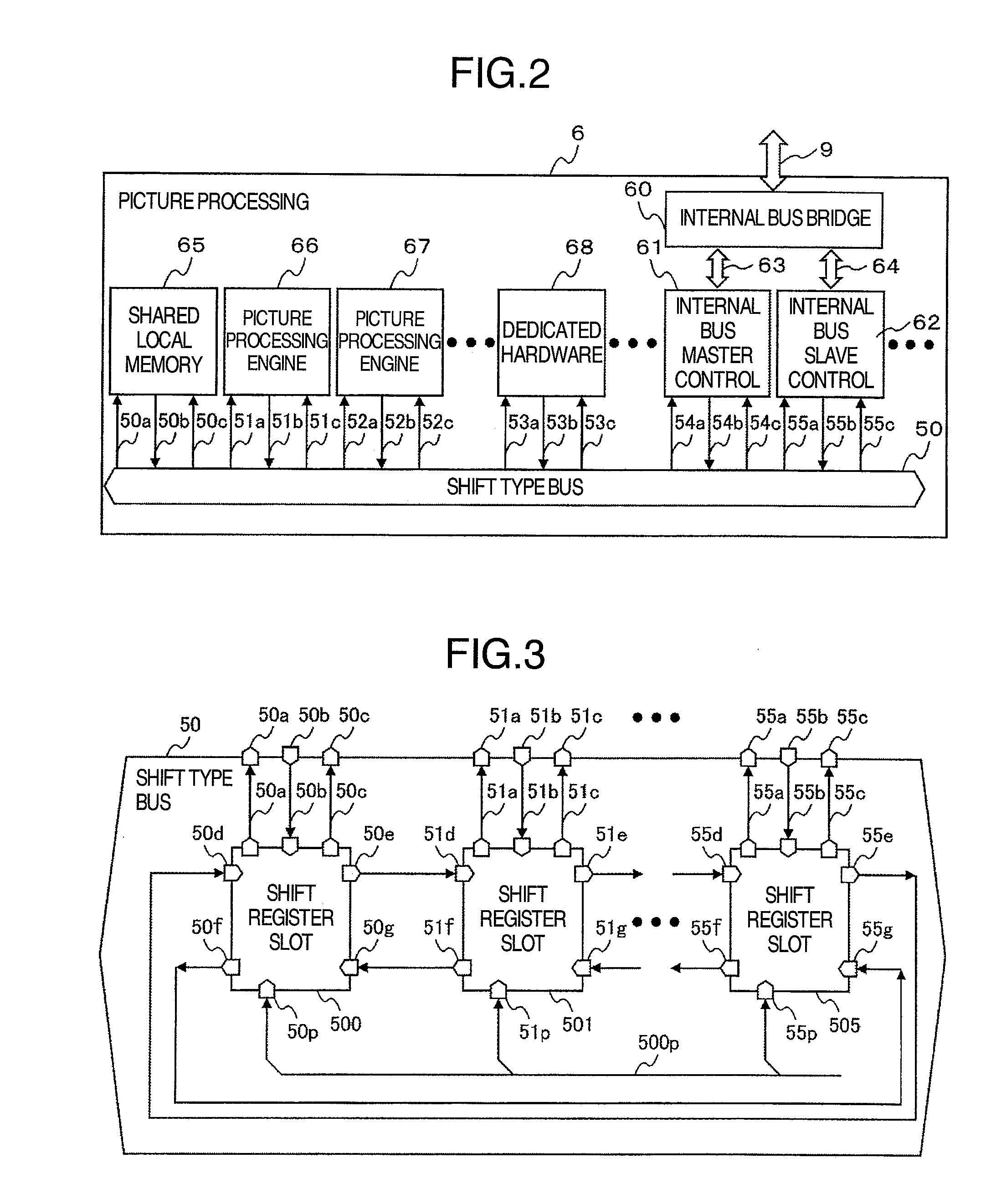Picture Processing Engine and Picture Processing System
a picture processing engine and picture processing technology, applied in the field of picture processing engines and picture processing systems, can solve the problems of increasing power consumption, increasing power consumption, and relatively high power consumption of memory, and achieve the effects of reducing the total capacity of instruction memory, reducing the number of instructions, and reducing the power consumed in reading instruction memory
- Summary
- Abstract
- Description
- Claims
- Application Information
AI Technical Summary
Benefits of technology
Problems solved by technology
Method used
Image
Examples
embodiment 1
[0045]A first embodiment of the present invention will be described in detail with reference to the accompanying drawings. FIG. 1 is a block diagram of an embedded system in this embodiment. In this embedded system, CPU 1 for carrying out a control of the system and a general processing, a stream processing part 2 for carrying out a stream processing, which is one of the processings of a video codec, such as MPEG, a picture processing part 6 which carries out encoding and decoding of the video codec in combination with the stream processing part 2, a voice processing part 3 for carrying out encoding and decoding of a voice codec, such as AAC and MP-3, an external memory control part 4 which controls an access to an external memory 20 consisting of SDRAM and the like, a PCI interface 5 for connecting to a PCI bus 22 which is a standard bus, a display control part 8 for controlling an image display, and a DMA controller 7 which carries out direct memory access to various IO devices, a...
embodiment 2
[0099]A second embodiment of the present invention is described using FIG. 14. FIG. 14 is a block diagram of the picture processing engine 66 in this embodiment. There are three differences from the picture processing engine 66 of the first embodiment shown in FIG. 6. The first one is that the input data 30i and the calculation data 30wb of the CPU part 30 are connected to a vector calculation part 46. The input data 30i is a data to be inputted to the register file 304 in the CPU part 30 and can update the data of the register file 304. The calculation data 30wb is a calculation result of the CPU part 30 and is inputted to the vector calculation part 46. The second one is that an instruction memory control part 47 in place of the instruction memory control part 32 of FIG. 6 is connected. The instruction memory control part 47 has a plurality of program counters and controls the instruction memory 31. In conjunction with this, the third difference is that the vector calculation part...
embodiment 3
[0112]A third embodiment is described using FIG. 20. FIG. 20 shows a configuration of a CPU part arranged in the picture processing engine 66 in this embodiment. In the first embodiment, a configuration of one CPU part 30 was described, and in the second embodiment a configuration of two CPUs consisting of the CPU part 30 and vector calculation part 46 was described. In the third embodiment, two or more CPUs are connected in series and in a ring shape. In FIG. 20, the CPU part 30 capable of accessing to the data memory 35 is arranged in the front CPU, a plurality of vector calculation parts 46 and 46n are connected in series, and at the end terminal a CPU part 30s capable of accessing to the data memory 35 is connected. The calculation data 30i of the CPU part 30s is again connected to an input data part of the CPU part 30. At this time, each CPU includes a program counter, respectively, and actually includes a plurality of program counters in the instruction memory control part 47 ...
PUM
 Login to View More
Login to View More Abstract
Description
Claims
Application Information
 Login to View More
Login to View More - R&D
- Intellectual Property
- Life Sciences
- Materials
- Tech Scout
- Unparalleled Data Quality
- Higher Quality Content
- 60% Fewer Hallucinations
Browse by: Latest US Patents, China's latest patents, Technical Efficacy Thesaurus, Application Domain, Technology Topic, Popular Technical Reports.
© 2025 PatSnap. All rights reserved.Legal|Privacy policy|Modern Slavery Act Transparency Statement|Sitemap|About US| Contact US: help@patsnap.com



